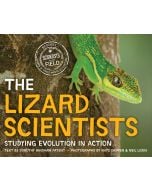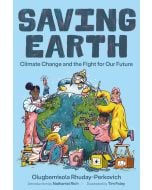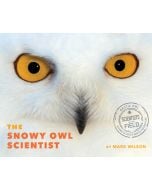
Rhinos in Nebraska: The Amazing Discovery of the Ashfall Fossil Beds
By Alison Pearce Stevens
Illustrators
Illustrated by Matt Hyunth
Edition
By Alison Pearce Stevens
Hardcover edition
Publisher Macmillan Imprint Henry Holt and Company, Inc. ISBN9781250266576
Rhinos in Nebraska: The Amazing Discovery of the Ashfall Fossil Beds
 17.85
17.85
Out of stock
SKU
9781250266576J
This jaw-dropping nonfiction middle grade book tells the story of the Ashfall Fossil Beds in Nebraska, the resting place of more than two hundred prehistoric animals.
Twelve million years ago, rhinos, elephants, and camels roamed North America. They would gather at nearby watering holes—eating, drinking, and trying not to become someone else’s lunch. But one day, in what we now know as Nebraska, everything changed. The explosion of a supervolcano a thousand miles away sent a blanket of ash that buried these animals for millennia.
Until 1953, when a seventeen-year-old farm worker made an unbelievable discovery.
This is the first book to be published about the Ashfall Fossil Beds, where more than 200 perfectly preserved fossils have been found. Step into the past with author Alison Pearce Stevens, who has worked with many of the Ashfall researchers at the University of Nebraska State Museum.
Twelve million years ago, rhinos, elephants, and camels roamed North America. They would gather at nearby watering holes—eating, drinking, and trying not to become someone else’s lunch. But one day, in what we now know as Nebraska, everything changed. The explosion of a supervolcano a thousand miles away sent a blanket of ash that buried these animals for millennia.
Until 1953, when a seventeen-year-old farm worker made an unbelievable discovery.
This is the first book to be published about the Ashfall Fossil Beds, where more than 200 perfectly preserved fossils have been found. Step into the past with author Alison Pearce Stevens, who has worked with many of the Ashfall researchers at the University of Nebraska State Museum.
|
Standard MARC Records Cover Art |
Nonfiction Middle Grades 5-8)
Nonfiction Middle
Nonfiction Middle Grades 5-8)
For Grades 5-8
Knowledge is power, and this category embodies that principle. Featuring 12 carefully selected nonfiction books, the collection spans autobiographies, anthropological studies, and more—making it perfect for research, classroom enrichment, and independent exploration. Some selections may explore identity, relationships, and real-world challenges, including LGBTQIA+ themes, moderate language, social issues, and other sensitive topics.
12 books per Year
$256.56 per Year
Interests
Biographies, History, Nonfiction, Science/STEAM






